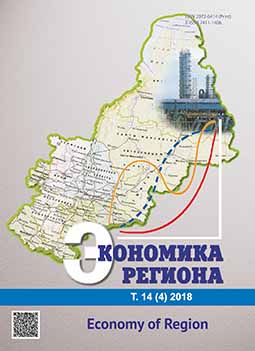Коалиционный анализ и эффекты межрегиональной интеграции
Coalition Analysis and Effects of Regional Integration
Author(s): Viktor Ivanovich Suslov, Naimdzhon Mulaboevich Ibragimov, Larisa Viktorovna MelnikovaSubject(s): Social Sciences, Economy, Geography, Regional studies
Published by: Институт экономики Уральского отделения Российской академии наук
Keywords: ;coalition analysis;interregional interactions;spatial input-output model;long-term forecast for 2030;equivalent exchange;equilibrium;Russian regions;interregional integration;own/net/gross contributi
Summary/Abstract: The resilience of a political, economic or trade alliances of countries or regions depends significantly on to what extent parties of a union consider their membership as beneficial. Dependent on predominant assessments, there may occur a complete disintegration of multi-regional systems, an expansion or contraction in the composition of participants, and maintenance of the status quo. The intensity of interregional exchange is used as an indicator to measure the degree of the regional integration of economic system. The paper represents the capabilities of the coalition analysis method for estimating the degree of interdependence in the multi-regional economy of the Russian Federation. The authors present an analytical review of the structural and statistical models used for estimating the effects of interregional integration as well as substantiate the choice of the approach. The basis of the coalition analysis is the input-output method and the theory of cooperative games. Moreover, the spatial input-output model of the Russian economy is developed on the methodology of national accounts statistics in terms of federal districts. We use a semi-dynamic version of the optimization multi-regional input-output model (OMIOM) on the statistical database of 2013 for developing the forecast up to 2030. On this basis, a coalition analysis of interregional interaction effects is carried out. The calculations revealed a high degree of regional integration as well as of involvement of the national economy into the world one. Depending on the structure of production and consumption of the federal districts’ economies, there are varying capacities to adapt to hypothetical changes in the volume of interregional links. The North-Western, Urals, Siberian and Far Eastern federal districts better adapt to the break of interregional links in comparison to the rest of the regions. The Central, North-Caucasian, Southern and Volga districts benefit more of their integration into the multiregional system and of the access to international markets. Prospects for using coalition analysis are associated with the introduction of an equilibrium condition, which will allow us to assess the degree of equivalence of interregional exchange.
Journal: Экономика региона
- Issue Year: 14/2018
- Issue No: 4
- Page Range: 1131-1144
- Page Count: 14
- Language: Russian

